The KD-90X series sensor is a 26G radar water level meter measuring instrument with a measuring distance of up to 80 meters. The antenna is further optimized for processing and the new fast microprocessor allows for higher speed signal analysis and processing, making the meter available for measurement of a wide range of highly corrosive liquids.

Radar water level meter antenna transmits a very narrow microwave pulse, this pulse propagates in space at the speed of light, encountering the surface of the measured medium, part of its energy is reflected back and received by the same antenna. The time interval between the transmitting pulse and the receiving pulse is proportional to the distance from the antenna to the surface of the measured medium. Due to the extremely high propagation speed of electromagnetic waves, the time interval between the transmitted and received pulses is very small (nanosecond order) and difficult to confirm. 90X series 26G radar water level meter uses a special demodulation technology to accurately identify the time interval between the transmitted and received pulses, so as to further calculate the distance from the antenna to the surface of the measured medium.
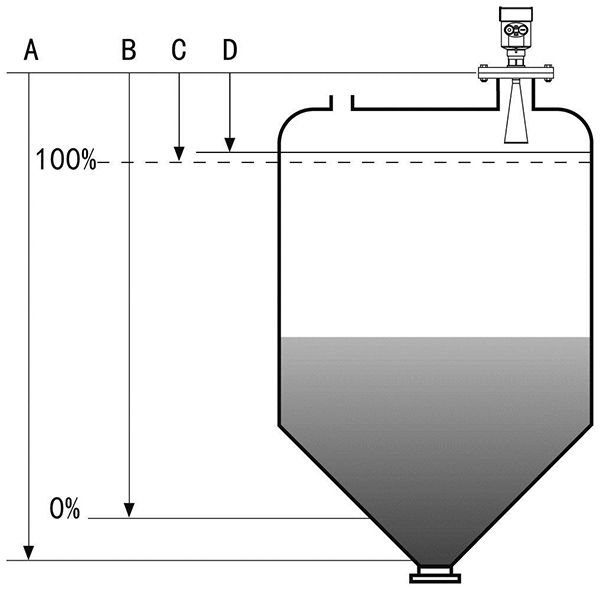
A: range setting, B:low level adjustment, C: high level adjustment, D: blind range
The reference surface for measurement is: the bottom surface of the thread or the sealing surface of the flange.
Note: When using the radar water level meter, be sure that the highest level cannot enter the measurement blind zone (the area shown in D in the figure).
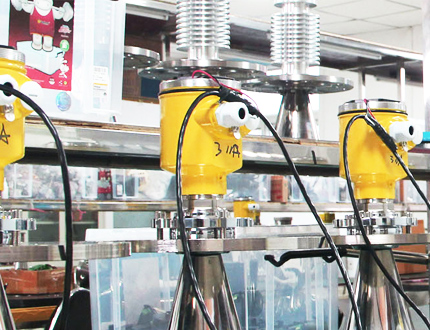 The industry-recommended radar water level meter adopts a transmitting
The industry-recommended radar water level meter adopts a transmitting
frequency of 26GHz, thus having:
● Small beam angle, concentrated energy, stronger anti-interference capability,
and greatly improved measurement accuracy and reliability.
● Small antenna size, easy to install and add dust cover and other antenna protection devices.
● Lighter weight of about 1KG, easy to install.
● Measuring range up to 70 meters, covering water level measurement in large reservoirs, etc.
● Multiple output circuit interfaces to work with the acquisition system.
The radar water level meter adopts pulse working mode, and the emission
power is extremely low, which is harmless to human body and environment.
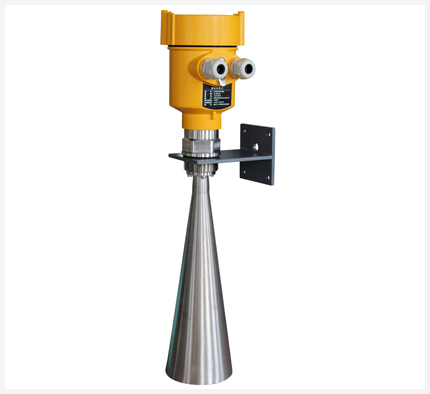 Applications: rivers, lakes, shallows
Applications: rivers, lakes, shallows
Measuring range: 30m
Process connection: Thread G1½ʺ A / bracket / flange
Process temperature: -40 to 100°C
Process pressure: atmospheric pressure
Accuracy: ±3mm
Frequency range: 26GHz
Protection class: IP67 / IP65
Power supply: DC (6-24V) / four-wire DC 24V / two-wire
Signal output: RS485/Modbus protocol 4~20mA/Hart two-wire
Field display: optional
Housing: Aluminum/Plastic
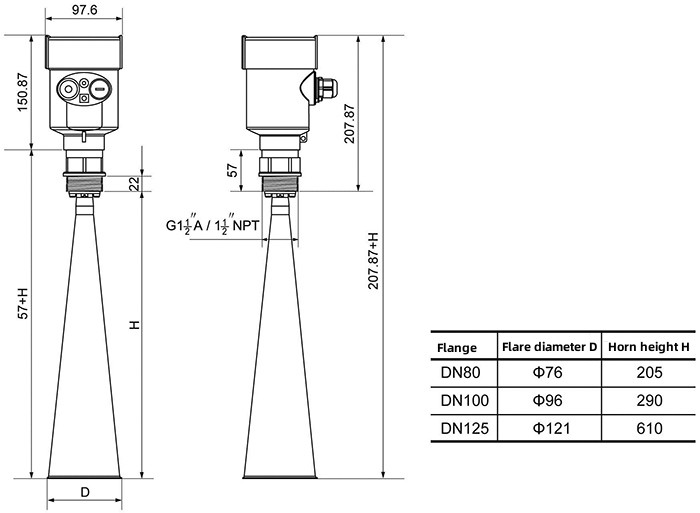
Housing: Seal between housing and housing cover Silicone rubber
Housing window: Polycarbonate
Grounding terminal: Stainless steel
Supply voltage: 4-wire (6~24) V DC / RS485 Modbus / Power consumption 90mWTwo-wire DC 24V / 4~20mA / Power
consumption 0.75W
Allowable ripple: - <100Hz Uss - (100 to 100K) Hz Uss
Cable parameters: Cable inlet / plug M20xl.5 cable inlet
Wiring terminals: Wire cross section 1.0mm²
Output parameters: Output signal RS485 Modbus / 4~20mA
Communication protocol: Modbus / Hart
Resolution: 1.6u A
Fault signal: Constant current output;20. 5mA.22mA;3.9mA
Integration time: (0~36)s, adjustableBlind area End of antenna
Measuring distance : KD-908 30m .KD-909 70m
Microwave frequency : 26GHz
Measurement interval : Approx. 1 second (depends on parameter setting)
Adjustment time : Approx. 1 second (depends on parameter setting)
Display resolution : 1mm
Operating storage and transport temperature : (-40 to 70) ℃
Process temperature : (temperature of antenna part) (-40~100)℃
Pressure: Normal pressure
Vibration resistance : Mechanical vibration l0m/s² , (10~150)Hz
Please note the following to ensure that the instrument can be installed correctly: Please allow enough space for installation. Please avoid installation where there is strong vibration.
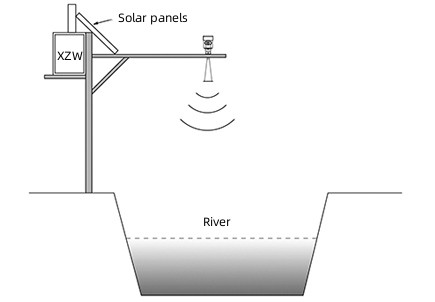
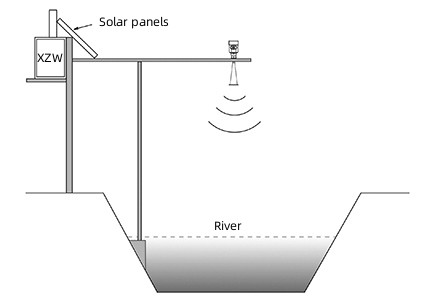
Radar and bracket installation schematic (I) Radar and bracket installation schematic (II)
Note: When the radar antenna transmits microwave pulses, there are certain launch angle. From the lower edge of the antenna to the surface of the measured medium, and the area radiated by the emitted microwave beam must not have obstacles. Therefore, the installation should be as far as possible to avoid obstruction facilities, if necessary, "false echo learning". When installing the instrument, we should also pay attention to the following: the highest level should not enter the measurement blind zone; the instrument must be connected to the earth and increase the lightning protection measures; outdoor shading and rain protection measures should be taken.
We are here to help you! If you close the chatbox, you will automatically receive a response from us via email. Please be sure to leave your contact details so that we can better assist